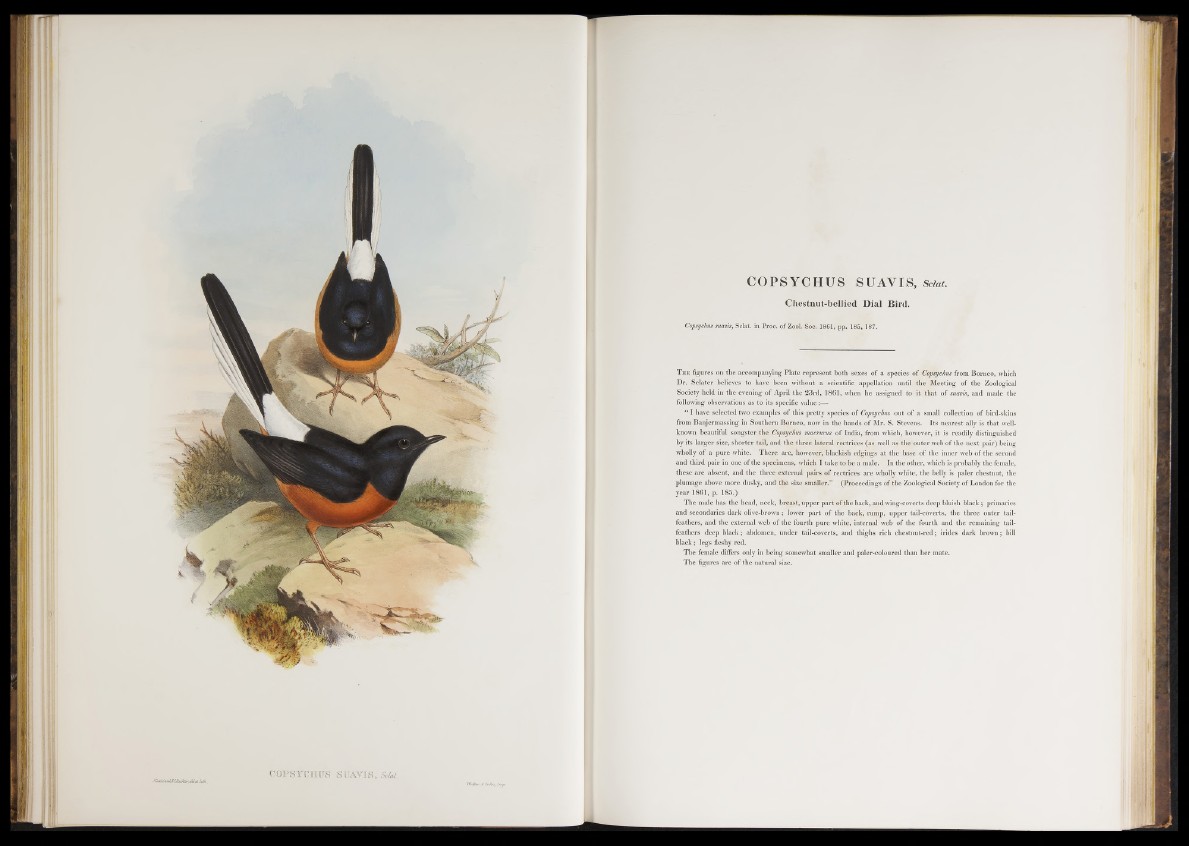
COPSYCHUS SFAYIS, Sdai.
JGmlJmUf.CRuAitr.ifoid ItlS
COPSYCHUS SUAVIS, Sclat.
Chestnut-bellied Dial Bird.
Copsychus suavis, Sclat. in Proc. of Zool. Soc. 1861, pp. 185, 187.
T h e figures on the accompanying Plate represent both sexes o f a species of Copsychus from Borneo, which
Dr. Sclater believes to have been without a scientific appellation until the Meeting of the Zoological
Society held in the evening of April the 23rd, 1861, when he assigned to it that o f suavis, and made the
following observations as to its specific value:—
“ I have selected two examples o f this pretty species o f Copsychus out o f a small collection of bird-skins
from Banjermassing in Southern Borneo, now in the hands of Mr. S. Stevens. Its nearest ally is that well-
known beautiful songster the Copsychus macrurus of India, from which, however, it is readily distinguished
by its larger size, shorter tail, and the three lateral rectrices (as well as the outer web of the next pair) being
wholly of a pure white. There are, however, blackish edgings at the base of the inner web o f the second
and third pair in one of the specimens, which I take to be a male. In the other, which is probably the female,
these are absent, and the three external pairs o f rectrices are wholly white, the belly is paler chestnut, the
plumage above more dusky, and the size smaller.” (Proceedings of the Zoological Society o f London for the
year 1861, p. 185.)
The male has the head, neck, breast, upper part of the back, and wing-coverts deep bluish black; primaries
and secondaries dark olive-brown; lower part o f the back, rump, upper tail-coverts, the three outer tail-
feathers, and the external web of the fourth pure white, internal web of the fourth and the remaining tail-
feathers deep black; abdomen, under tail-coverts, and thighs rich chestnut-red; irides dark brown; bill
black; legs fleshy red.
The female differs only in being somewhat smaller and paler-coloured than her mate.
The figures are of the natural size.